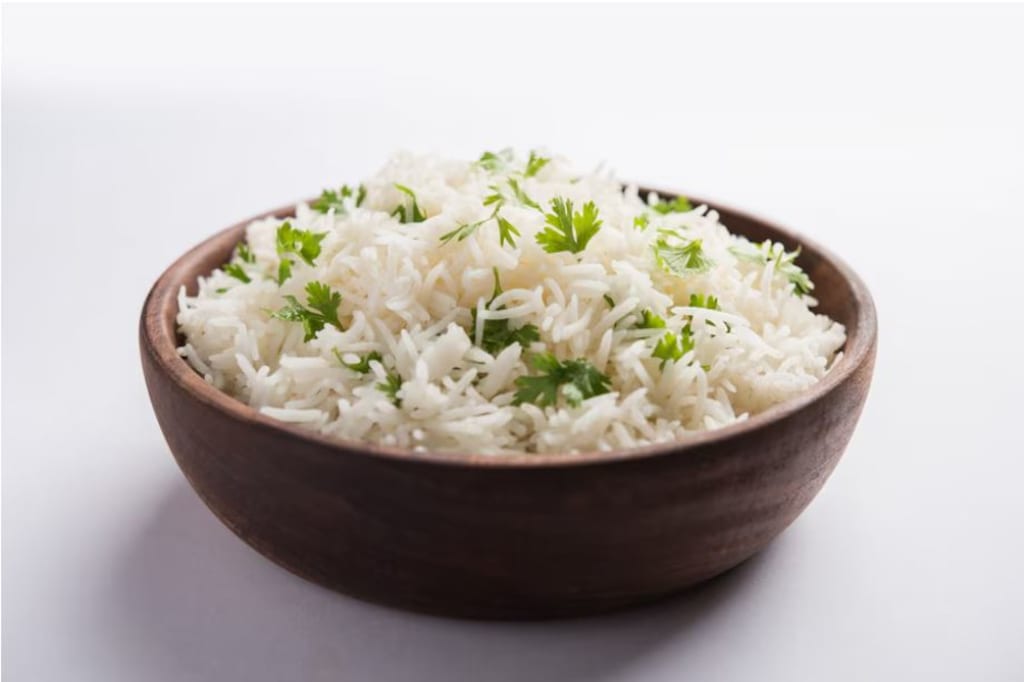Which One Is Better? Exploring The Differences Between Basmati And Non-basmati Rice
Best Basmati Rice Suppliers in India

Rice is revered as the staple food for many countries and consumed in different cuisines in various cultures. Basmati rice vs non-basmati rice can trigger a heated debate among rice lovers, chefs, and food enthusiasts. Basmati rice and non-basmati rice are used for creating different cuisines.
If you’re planning to make a spicy biryani or a sweet kheer for calling out celebrations, this article is for you. This article will help you understand the difference between basmati and non-basmati rice, so you can choose the right rice for different dishes. In this blog, we will delve deep into the essential distinctions between Basmati and Non-Basmati rice, exploring their nutritional disparities, culinary versatility, and roles in both Indian and international dishes.
What Are Basmati And Non-Basmati Rice?
Let’s talk about everyone’s favorite basmati rice. Basmati rice is a premium long-grain rice known for its unique aroma, flavour, and elongated grain size. Basmati rice is harvested between the month of October and November in different Indian subcontinents, such as- Punjab, Haryana, Rajasthan, and Uttarakhand. When cooked, Basmati rice remains fluffy and the grains stay separate, making it a popular choice for dishes like biryanis, pulaos, and pilafs. Due to its premium quality, Basmati rice is often considered suitable for special occasions and celebrations.
Basmati rice is known for its lovely smell and premium texture. It has long, slim grains and smells a bit like pandan leaves or jasmine flowers. It comes from the mountains called the Himalayas. The special smell makes the food taste even better, so people like to use it for important events and celebrations.
On the other hand, non-basmati rice is another different category of rice. Non-basmati rice is more affordable than basmati rice. Non-basmati rice is shorter in size than basmati rice and doesn’t exhibit a unique aroma while cooking. Non-basmati rice comes in different sizes and textures and is also used in many households because of its affordability. They are commonly used in everyday cooking for a variety of dishes, from traditional curries and lentils to simple rice bowls. Non-Basmati rice is more affordable and widely consumed compared to Basmati rice.
Non-basmati rice covers a wide range of rice varieties, each with its own texture and flavour profile. Non-basmati rice comes in different shapes, size, and culinary applications. Non-Basmati rice is a staple in many households, serving as an everyday ingredient in a plethora of dishes.
Comparison of Basmati and Non-Basmati Rice
There are several characteristics that set basmati rice and non-basmati rice poles apart from each other, including the following-
Grain size- Basmati rice grains are larger than non-basmati rice, ranging from long and stubby. whereas non-basmati rice is short and sticky when cooked.
Aroma and Flavor: The hallmark of Basmati rice is its delightful fragrance, whereas Non-Basmati rice does not possess the same intense aroma.
Nutritional differences- Both basmati and non-basmati rice are rich in carbohydrates, but basmati rice has low restraint starch in comparison with non-basmati rice. Basmati rice may also contain fewer calories than certain types of Non-Basmati rice.
Culinary uses- Basmati rice is primarily used for biryani and consumed with spicy curries. On the other hand, non-basmati rice is mostly used for kheer and Chinese cuisines, such as- fried rice.
Global Impact: Basmati rice has gained global recognition for its unique qualities, becoming a favorite in international cuisines. Non-Basmati rice, with its affordability and varied textures, also finds its way into kitchens worldwide.
Cooking with Basmati and Non-Basmati Rice:
Basmati rice’s elongated grains and aromatic nature make it ideal for special rice dishes, where the fragrance plays a significant role. Non-Basmati rice’s diverse textures are suitable for everyday meals, regional cuisines, and a wide variety of recipes.
The importance of knowing the difference between basmati and non-basmati rice for the global rice market
Trade and Export: Basmati and non-Basmati rice are both major players in international rice trade. Understanding the distinctions helps exporters, importers, and traders make informed decisions about sourcing and selling these rice types.
Market Demand: Different regions and cuisines have varying preferences for rice. Being aware of the differences helps exporters cater to specific market demands and preferences, enhancing their competitiveness.
Pricing and Value: Basmati rice is often priced higher due to its premium qualities. Non-Basmati rice, being more affordable, addresses a different market segment. Knowing these price dynamics is crucial for pricing strategies and market positioning.
Quality Assurance: Importers and buyers need to ensure they are getting the rice variety they intend to purchase. Understanding the differences aids in quality assurance and prevents mislabeling or mix-ups.
Culinary Use: Different cuisines rely on specific rice varieties for traditional dishes. Knowing which rice type suits which culinary application helps in targeting the right markets.
Consumer Preferences: Global consumers are becoming more conscious of food choices, including rice. Knowing the differences between Basmati and non-Basmati rice allows businesses to communicate the unique qualities of each type, catering to discerning consumers.
Regulations and Standards: International trade often involves adherence to regulations and standards. Recognizing the differences ensures compliance with labeling, quality, and origin regulations.
Market Segmentation: The global rice market is diverse, with different categories demanding unique rice varieties. This knowledge enables effective market segmentation and targeted marketing strategies.
Strategic Partnerships: Being knowledgeable about both Basmati and non-Basmati rice can improve partnerships between producers, exporters, and distributors, providing collaboration for mutual benefit.
Conclusion
In essence, understanding the differences between Basmati and non-Basmati rice in the global market is a strategic advantage. It enables businesses to make informed decisions, capitalise on market opportunities, cater to diverse consumer preferences, and navigate the complex landscape of international rice trade.
Veer Overseas is one of the best basmati rice supplier in india.
About the Creator
Enjoyed the story? Support the Creator.
Subscribe for free to receive all their stories in your feed. You could also pledge your support or give them a one-off tip, letting them know you appreciate their work.





Comments (1)
Interesting and delicious content, keep posting more now